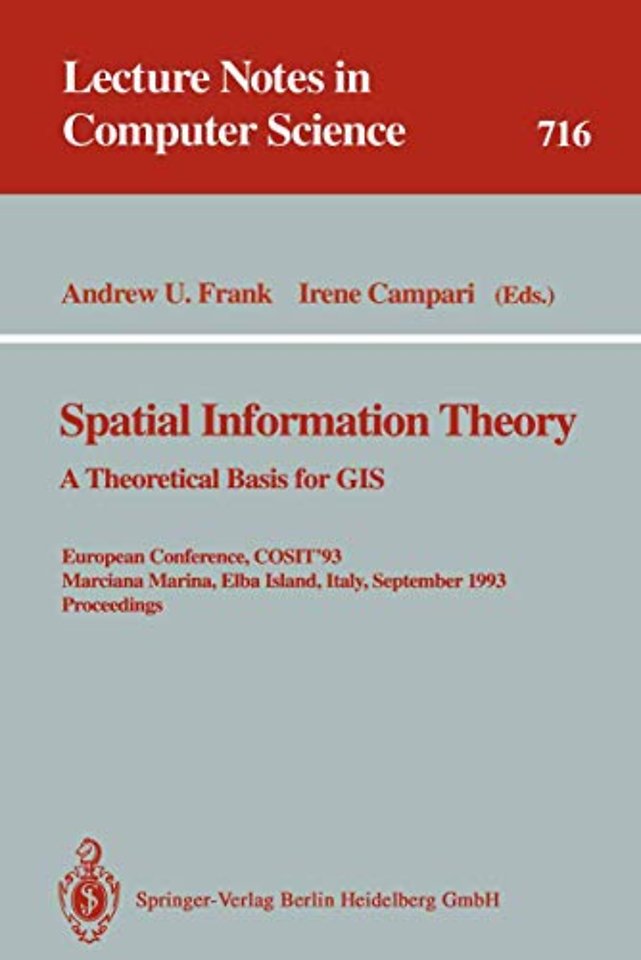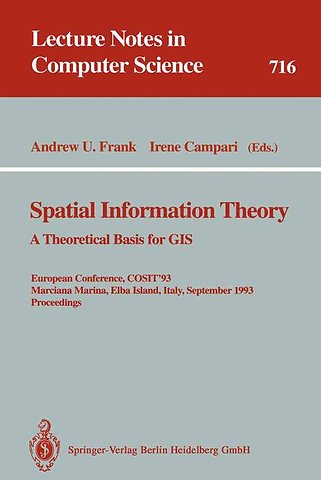Spatial Information Theory: A Theoretical Basis for GIS
A Theoretical Basis for GIS. European Conference, COSIT'93, Marciana Marina, Elba Island, Italy, September 19-22, 1993. Proceedings
Paperback Engels 1993 1993e druk 9783540572077Samenvatting
This volume collects the papers presented at the European
Conference on Spatial Information Theory (COSIT '93) held on
the island of Elba, Italy, inSeptember 1993. Spatial
information theory includes disciplinary topics and
interdisciplinary issues dealing with the conceptualization
and formalization of large-scale (geographic) space. It
contributes towards a consistent theoretical basis for
Geographic Information Systems (GIS).
Geographic information systems are widely used in
administration,planning, and science in many different
countries, and for a wide variety ofapplications. Research
results which relevant for GIS are distributed between many
disciplines and contacts between researchers have been
limited. At the same time, the development of GIS has been
hinderedby the lack of a sound theoretical base. This
conference was intended to help remedies these problems.
Specificaties
Lezersrecensies
Inhoudsopgave
Rubrieken
- advisering
- algemeen management
- coaching en trainen
- communicatie en media
- economie
- financieel management
- inkoop en logistiek
- internet en social media
- it-management / ict
- juridisch
- leiderschap
- marketing
- mens en maatschappij
- non-profit
- ondernemen
- organisatiekunde
- personal finance
- personeelsmanagement
- persoonlijke effectiviteit
- projectmanagement
- psychologie
- reclame en verkoop
- strategisch management
- verandermanagement
- werk en loopbaan

